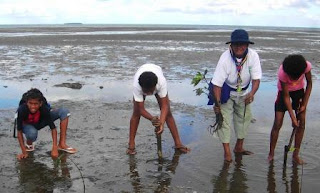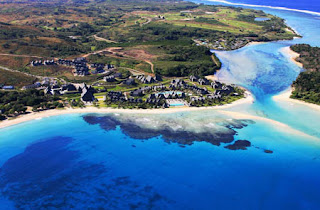SWAMP PLAN ON HOLD.
Researchers have long been calling for the government of Fiji to effectively protect their mangroves. However, legislation was never fully enforced. A mere four days ago, on November 19, the government has done just that! Well, almost. In Fiji’s capital, Suva, officials announced that they are (finally) putting applications for development on mangroves on hold. And with good reason--they say they need to protect mangroves and explore how they will do that by reviewing the Mangrove Management Plan of 1985-1986 in collaboration with agencies. They publicly recognized the permanent loss of mangroves urban development has caused. Furthermore, they called for an “urgent moratorium” because the loss of the mangroves means the loss of their traditional fishing grounds and cultivation for medicine and food. The government is embracing tradition.
This is important because there is still so much unexplored potential of the tourism sector in Fiji. Potential that could easily exploit the mangroves even more. This decision shows that the government is taking a stand and standing up for mangroves and stepping in the right direction. This sends a strong message across both natives and foreign investors. The government is acting in the interests of the environment and natives and developers will be forced to as well. Director Environment Jope Davetanivalu said that before they development was allowed an environment impact assessment would have to be done, which could take a year.
Fiji is not rejecting urbanization, but rather they are demanding that it be done sustainably and carefully. The area under review is the Suva peninsula areas. This decision was a direct result of a letter from the people of Rewa calling attention to the destruction of mangroves from development on the Suva Peninsula. The government is co-operating with its people.
This recent development is a good sign for future of Fijian mangroves. The government is actively protecting its mangroves, and, furthermore, proves it is able to work with its people.
Works Cited:
Seru, Maikeli. "Results." Swamp Plan on Hold. Fiji Sun Newspaper, 19 Nov. 2012. Web. 23 Nov. 2012. <http://www.fijisun.com.fj/2012/11/19/swamp-plan-on-hold/>.
Seru, Maikeli. "Results." Swamp Plan on Hold. Fiji Sun Newspaper, 19 Nov. 2012. Web. 23 Nov. 2012. <http://www.fijisun.com.fj/2012/11/19/swamp-plan-on-hold/>.











